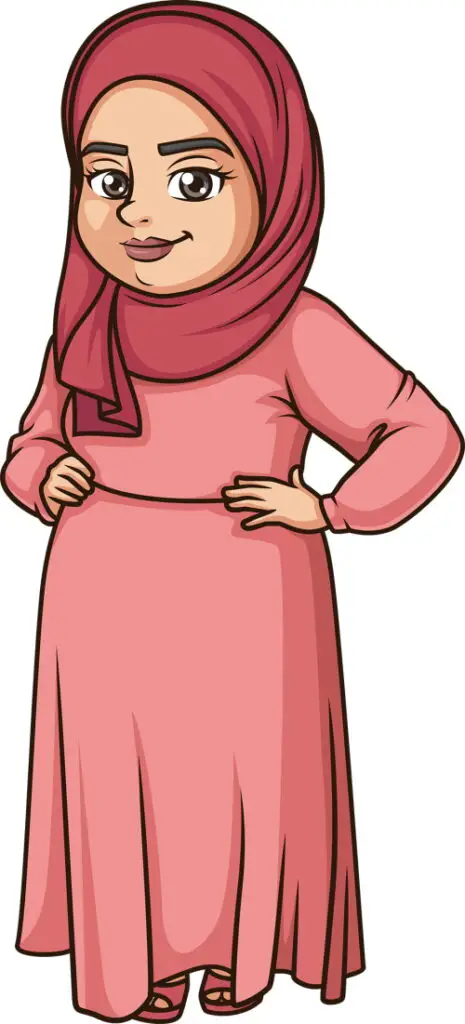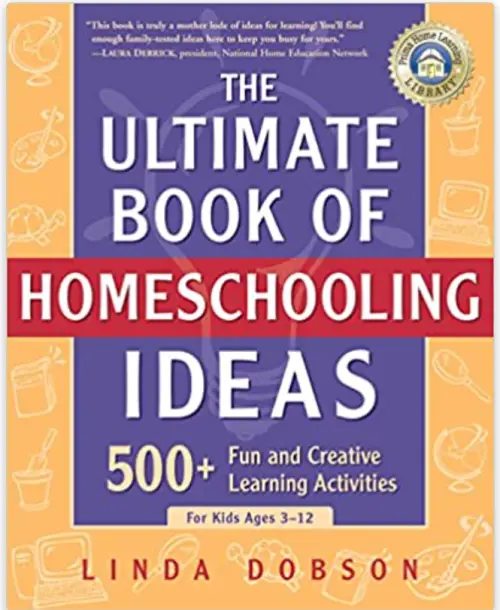Basic living expenses are higher than ever before and continue to rise each year. So, it’s not too surprising that some question why do people have so many kids, especially when seeing a larger family out and about. It’s just too expensive, right?
There are very specific reasons why people have so many kids such as cultural and religious beliefs or modern medical advances changing today’s maternity and neonatology. And for those proponents of large families, the reasons to not have many kids do not overshadow the strong beliefs for doing so.
Although not considered an extreme family, our family of two parents and four kids often got curious looks, especially in more metropolitan cities, for its larger than average size. I’ve researched this subject a bit and happy to share what I’ve learned about why people have so many kids, as well as our personal perspective on it.

Contents
How Many Kids Are Too Many?
Family size has certainly changed in western societies. As well, different countries and cultures have had different norms as to what’s a typical family size. So given all that, how many kids are too many?
How many kids are too many is a misguided question. Family size is truly up to the family, just like where to live, what to eat, family hobbies, and the occupation of its members. The real concern usually associated with questions about family size is whether or not it is a burden on society.
Therefore, the question of how many kids is too many is more about if the family’s choice of four, six, twelve, or whatever the number may be of kids is related to the use of societal supports like food and health benefits. Does the family benefit monetarily, for example, from tax-funded programs for the sole reason of having x-number of kids?
Some possible programs* US families can use related to having kids:
- WIC (Womens, Infant, and Children program providing food and medical checkups for pregnant women, new mothers, and children up to age 5
- Child Tax Credits (monthly and yearly monetary rebates per child)
- Supplemental Nutrition Assistance Program (SNAP) which provides monetary assistance to purchase groceries
- Head Start (educational programs free for children of 3 -5 years old)
- American Families Plan (provides limited free postsecondary education; partially-funded health care and childcare)
*income contingencies
So other than financial means for caring for many kids, another major consideration for couples planning their family size is education. Many question how couples with ‘so many kids’ can provide a quality education for them, even with free public schooling. As well, naysayers often bring up the high costs of higher education when you have so many.
Well, this too is a presumptive question. Many larger families opt for homeschooling for K-12 education. Believe it or not, homeschooling provides the most flexibility for tailoring schooling to a nontraditional (yet, generally, traditional) kind of family. And with the prevalence of accessible and affordable homeschooling material like The Ultimate Book of Homeschooling Ideas: 500+ Fun and Creative Learning Activities (from Amazon), homeschooling has surged in popularity in recent years for families of all sizes.
I’ve also written extensively about free Christian-based material for homeschooling, which I highly recommend for anyone considering homeschooling to read.
And it should be noted that postsecondary education is not a necessity or even a ‘want’ for many, especially those from uncommon backgrounds like large families. Yet, if postsecondary education is desired there are many avenues for paying for it or reducing the costs, including but not limited to: college savings plans, financial government aid, scholarships, community colleges, and work programs, that are available to all families big and small.
Famous men with many kids*:
- Actor Mel Gibson has eight children
- Actor/Director Clint Eastwood has seven kids
- Singer/Poet Bob Dylan has six kids
- Actor/Comedian Eddie Murphy has ten kids
- Actor/Comedian Charlie Chaplin had eleven kids
- Boxer Muhammad Ali has nine children
*at time of posting
Are 4 Kids Too Many?

In 1976, according to Pew Research Center, the four-child family was dominant. However, by 2014, that had changed quite drastically in half…to today’s more common family size of two children. So are four kids too many nowadays?
Having four kids is certainly not too many. A family with four children was typical in the 1970s without concern. Recently, this has changed, but not due to size alone. Family size is related to many issues such as religion, culture, lifestyle, as well as finances, so it’s multifaceted decision.
Personally, I know quite a bit about families with four kids. First of all, I am a child of four, having three brothers. In addition, my husband and I have four kids ourselves, with three sons and one daughter. In both cases, having four kids isn’t cheap, since it requires more food, clothing, and living space. However, finances are just one issue.
Having four kids, and being a part of four kids, has other benefits, too. It means there are many siblings to interact with for education, socialization, and emotional support. Larger families have the distinction of always having someone you can talk to, or rely upon in times of need. And as you grow into adulthood, this bond is even more highly valued!
Suggested reading related to families:
- Family More Important Than Friends? (Friends Are Overrated)
- Is Having A Baby Worth It? (A Pros And Cons Look)
- How Many Kids Do You Want Is Hard For Some, Easy For Others
- Tips from 20 Years of Good Homeschool Behavior Management
Are 5 Kids Too Many?

Having five kids comes with several challenges in just day-to-day living. For example, most modern day cars are too small for a family with five children. Are five kids too many?
Just like with having four kids, having five kids is not too many. Although not as common as four-child families, families with five children have existed for many years, and success, or not, is unrelated to size, considering many families have more than five and do just fine.
There are some special concerns families must consider as child-size grows, however. For example, larger size families must address mobility. Most cars today seat 4-6 people, no matter their age or physical size, so families with five children may need two vehicles or large-passenger vans for transportation. This, of course, affects finances as insurance, gas, and so on are increased.
Also, large families face housing concerns that don’t necessarily affect small size families in the same way. Typically, the larger the home and more bedrooms it has, the higher the cost for purchasing or renting it is. Even with multiple people (or children) sharing rooms, larger families need more space than smaller ones.
In addition, larger families must be more aware of food costs because it is going to require more food to feed more people. Likewise, going out to eat will not only cost more, but also requires flexibility in seating. Larger groups need more table space, sometimes requiring ‘call ahead’ seating or reservations to notify restaurants before arriving to ensure your larger family can sit together.
Having 5 kids is altogether not that much different than having 4, but regardless, larger families bring about some special considerations in general that smaller families don’t encounter. This is not to say these issues are cause for alarm, rather just preparation.
Popular Family TV shows with 5 kids:
- The Little House on the Prairie (ran from 1974-1983)
- The Cosby Show (ran from 1984-1992)
- Party of Five (ran from 1994-2000)
- Malcolm in the Middle (ran from 2000-2006)
- Black-ish (ran from 2014-present)
How Many Babies Can A Woman Have In Her Lifetime?
Some voice concern over multiple pregnancies when seeing large families. So with that in mind, how many births can one woman actually have in her lifetime?
Mathematically, a woman could have about 40 pregnancies in her lifetime given the span of reproductive years aged 13-51, and since all pregnancies have the possibility for multiple babies, that number could result in more than 40 children for one woman. Yet, this is highly impractical and unlikely.
Shockingly, the Guiness Book of World Records lists the most live births from one woman at 69! This is a suspicious, and difficult to prove, story of an unnamed Russian woman (spouse: Feodor Vassilyev) who supposedly gave birth to many multiples in the early 1700s. I personally admit extreme skepticism at the validity of this story.
However, just as shocking to me anyway is a more recent, and verified, record-holder of ‘most live births’. Again recorded in Guinness World Records (1999), Leontina Albina from San Antonio, Chile, is said to have had 55 authenticated live births!
But is it actually safe for a woman to give birth to many children, whether at one time or multiple single births?
The Mayo Clinic cautions parents about spacing pregnancies for both mom and baby’s health. Complications for the baby of moms who have live births too close together include low birth weight, premature birth causing underdeveloped lungs and other organs, and increased risk for physical or mental disability.
(Special Note: Medical experts stipulate ‘live births’ in this context because women who suffer miscarriages or pre-term stillborn babies are not regulated to the same wait times since those kinds of pregnancies don’t cause the same physical toll.)
For this reason, doctors and other medical professionals recommend women wait at least 12 months before getting pregnant again after a live birth regardless of their family size planning, or even maternal age.
Complications for mothers who have 5 or more vaginal births or 3 caesarean births (Source: Johns Hopkins):
- Uterine rupture
- Bladder problems
- Abnormal placentation
- Nutrient deficiencies
- Postpartum hemorrhage
Why Do People Choose to Have Extreme Families?
Modern tv and social media have made extreme families more commonly known. From the Duggars of Arkansas to the Derricos of Nevada, large families are popular, at least to watch. So why do some people deliberately choose to have extreme families?
Some people have extreme families because of cultural or religious beliefs. As well, modern medicine has lengthened childbearing years and strengthened high-risk pregnancies, in addition to making more multiple pregnancies possible, all resulting in an increase of families having many children.
Jon and Kate Plus 8, with husband and wife along with their eight children, premiered in 2007 and introduced big broods to American families via TLC cable programming. Afterwards, more and more shows popped up to ‘entertain’ us with the lives of extra large families.
From 2008’s 19 Kids and Counting (the Duggars) to 2012’s Bringing Up Bates (the Bates’) to 2020’s Doubling Down with the Derricos, it seems American viewers’ and TLC’s fascination with extra large families is far from over.
What Religion Promotes Having Many Children?
It is true that one of the major reasons behind having large families is religion. Whether you know a large family in person or you are a fan of large family TV shows, you’re likely to notice religion as a common influence. So what religions promote having many children?
There are both Christian and non-Christian faiths that promote having many children. From Christian faiths like Catholicism and fundamental sects of Protestantism to non-Christian faiths of Islam, Hinduism, and Mormonism, religion is one of the unifying factors of many large families.
Common to many religious followers is the ideal of strong family values and this leads to wanting to share your values with many children. We’ll look more at this from Christian and non-Christian views below.
Traditional Followers of Christian Faith Have Many Kids
What is most common about large families on TV? Most are professed believers in Jesus Christ as savior and live their lives according to their interpretation of the Bible. These families are almost always from the Protestant sects of Christianity.
Religious large families:
- Duggars (19 and Counting; Counting On): devout, independent Baptists
- Derricos (Doubling Down with the Derricos): mainstream, independent Baptists
- Bates (Bringing Up Bates; United Bates of America): evangelical, conservative Baptists
- Busbys (Outdaughtered): ‘nondenominational’ evangelical
- Waldrops (Sweet Home Sextuplets): conservative, independent Baptists
- McGhees (Growing Up McGhee): Apostolic
- Plaths (Welcome to Plathville): fundamental Baptists
Non-Religious large families:
- Gosselins (Jon & Kate Plus 8; Kate Plus 8)
- Radfords (Britain’s 22 Kids And Counting)
As shown above, most large families claim some religious affiliation; whereas it’s challenging to find a very large family that isn’t overtly religious in some way, such as the Gosselins and Radfords.
Followers of Some Non-Christian Religions Have Many Kids, Too

There are some non-Christian sects that believe in large families. Traditional versions of these non-Christian sects discourage use of contraception and see childbearing as a duty, according to Alicia Adsera of Princeton University
Tradtional non-Christian Religions that promote having many children:
- Muslim/Islam
- Judaism
- Hinduism
- Mormonism
Modern Technology: IVF and Other Advances to Increase Multiples
Making it easier to have extra large families is the advancement of modern medicine. IVF (Invitro fertilization) and other medical advances have not only increased the number of pregnancies but also the instances of multiple pregnancies such as twins or more.
Ways Modern Medicine has increased having many kids:
- IVF- makes it easier for some women to conceive, including women past childbearing years, and has increased instances of multiple pregnancies
- Medications- have help sustain high-risk pregnancies that would have otherwise terminated; helped women conceive who would have not likely conceived without medical intervention
Yet, this doesn’t guarantee smooth sailing for mom and baby/babies. Research has shown that IVF has extended the time limits for family planning, although complications are not eliminated. For instance, multiple pregnancy births have high maternal and neonatal complications, designating the pregnancy at once ‘high risk’, according to a 2009 study at Lady Reading Hospital.
Why Do People Have So Many Kids Wrap Up
To conclude, having many kids is a complex decision, not entirely linked to just one thing. Extra large families most often have strong religious beliefs that lead to their family planning but there are many other factors involved.
Just like with anything, people vary from place to place and with their personal ideals. It’s wise not to lump all extra large families into one category, even if they share a few commonalities.
For further reading, I recommend these related articles:

